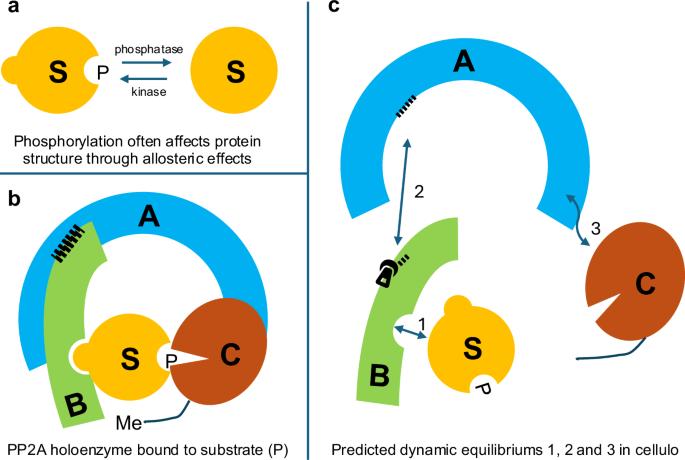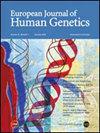Houge-Janssens syndrome
IF 4.6
2区 生物学
Q2 BIOCHEMISTRY & MOLECULAR BIOLOGY
引用次数: 0
Abstract
Houge-Janssens syndrome (HJS) is caused by protein phosphatase type 2A (PP2A) dysfunction. The core features are neurodevelopmental delay, especially concerning language, prolonged hypotonia, high risk of seizures, and behavior problems. PP2A oppose the activity of serine/threonine protein kinases, including growth promoting kinases of the PIK3CA/AKT/mTOR and RAS/MAPK pathways. Decreased PP2A activity can thus be growth promoting, as evidenced by recurrent pathogenic de novo missense variants in several PP2A subunits, some of which are associated with macrocephaly if congenital, or cancer if somatic. The current review gives an overview of both the clinical spectrum and known or potential pathogenic mechanisms in Houge-Janssens syndrome. For the latter, a basic insight in PP2A-mediated serine/threonine dephosphorylation is needed, although many fundamental questions regarding PP2A substrate specificity and activity determinants remain currently insufficiently resolved to provide a fully satisfactory molecular explanation of the effect of some mutations. So far, dominant pathogenic variants in at least two B subunits (PPP2R5D in HJS type 1 and PPP2R5C in HJS type 4), the major scaffolding subunit (PPP2R1A in HJS type 2) and the major catalytic subunit (PPP2CA in HJS type 3) can cause Houge-Janssens syndrome. The main aim is to explain why and how the different Houge-Janssens syndrome subtypes biochemically and clinically overlap, providing a framework for understanding new variants and new subtypes that will be found in the future. Hypothetically, small molecules that alleviate substrate blockade by affected B subunits or correct misfolding of affected A subunit, could represent treatment options, but these remain to be found.

Houge-Janssens辛拉登.
HJS是由蛋白磷酸酶2A型(PP2A)功能障碍引起的综合征。其核心特征是神经发育迟缓,特别是在语言方面,长期张力低下,癫痫发作的高风险和行为问题。PP2A抑制丝氨酸/苏氨酸蛋白激酶的活性,包括PIK3CA/AKT/mTOR和RAS/MAPK通路的促生长激酶。因此,PP2A活性的降低可以促进生长,几个PP2A亚基的复发致病性新生错义变异证明了这一点,其中一些与先天性大头畸形或体细胞癌症有关。本文综述了Houge-Janssens综合征的临床谱和已知的或潜在的致病机制。对于后者,需要对PP2A介导的丝氨酸/苏氨酸去磷酸化有一个基本的了解,尽管关于PP2A底物特异性和活性决定因素的许多基本问题目前仍未得到充分解决,无法对一些突变的影响提供一个完全令人满意的分子解释。迄今为止,至少两个B亚基(HJS 1型的PPP2R5D和HJS 4型的PPP2R5C)、主要支架亚基(HJS 2型的PPP2R1A)和主要催化亚基(HJS 3型的PPP2CA)的显性致病变异可引起hue - janssens综合征。主要目的是解释不同的Houge-Janssens综合征亚型在生物化学和临床上重叠的原因和方式,为理解未来将发现的新变体和新亚型提供一个框架。假设,减轻受影响的B亚基对底物的阻断或纠正受影响的A亚基的错误折叠的小分子可能是治疗选择,但这些仍有待发现。
本文章由计算机程序翻译,如有差异,请以英文原文为准。
求助全文
约1分钟内获得全文
求助全文
来源期刊

European Journal of Human Genetics
生物-生化与分子生物学
CiteScore
9.90
自引率
5.80%
发文量
216
审稿时长
2 months
期刊介绍:
The European Journal of Human Genetics is the official journal of the European Society of Human Genetics, publishing high-quality, original research papers, short reports and reviews in the rapidly expanding field of human genetics and genomics. It covers molecular, clinical and cytogenetics, interfacing between advanced biomedical research and the clinician, and bridging the great diversity of facilities, resources and viewpoints in the genetics community.
Key areas include:
-Monogenic and multifactorial disorders
-Development and malformation
-Hereditary cancer
-Medical Genomics
-Gene mapping and functional studies
-Genotype-phenotype correlations
-Genetic variation and genome diversity
-Statistical and computational genetics
-Bioinformatics
-Advances in diagnostics
-Therapy and prevention
-Animal models
-Genetic services
-Community genetics
 求助内容:
求助内容: 应助结果提醒方式:
应助结果提醒方式:


